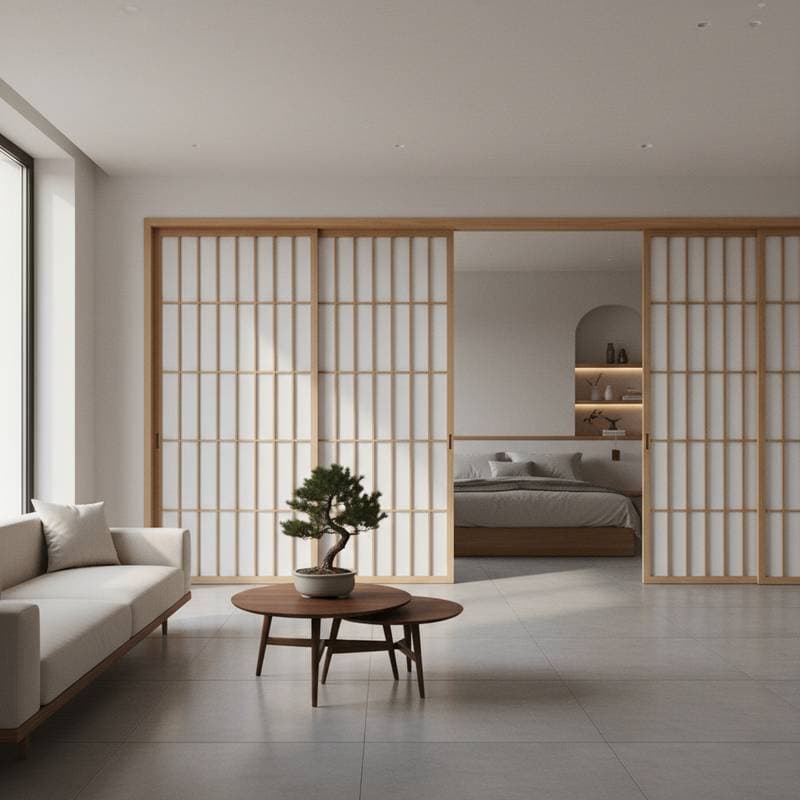Japandi Sliding Doors: Embracing Minimalism in 2025
Japandi design appeals to homeowners who prioritize simplicity, equilibrium, and skilled workmanship. This fusion of Japanese restraint and Scandinavian coziness produces an atmosphere that soothes while serving practical needs. Japandi sliding doors stand out as a prime method to infuse this style into residential settings, employing straightforward profiles and organic substances to foster environments that appear expansive, deliberate, and elegantly subdued.
For those considering enhancements to interior passages, storage areas, or spatial partitions, these doors can transform the ambiance of any room. The following sections detail pricing elements, material choices, and setup processes to guide informed decisions.
Factors Shaping the Price of Japandi Sliding Doors
Multiple elements determine the total expense of Japandi sliding doors. A clear grasp of these components enables precise financial planning.
Material Choices
Organic timbers such as oak, maple, and walnut prevail in Japandi applications, imparting a gentle glow yet demanding higher fees for superior surface treatments. Alternatives like bamboo or composite woods prove more budget-friendly without compromising the natural vibe. Integrating glass with timber enhances visual appeal, though it necessitates robust fittings and reinforced structures for stability.
Dimensions and Layout
Basic single-panel sliders represent the least costly option, whereas dual-panel or recessed setups incur greater charges. Extra-large panels or bespoke rail mechanisms further inflate both supply and workforce costs. Typical single panels span 36 inches in width, but expansive projects might surpass 60 inches per section, requiring scaled adjustments.
Surface Treatments and Fittings
Japandi aesthetics favor understated coatings. Gentle matte varnishes, plant-based oils, or pale hues range from $150 to $400 per unit. High-end mechanisms that close silently or hide tracks contribute an additional $200 to $500, ensuring smooth operation.
Setup Demands
Existing rail frameworks in a residence lower labor fees. Adapting conventional openings to sliding formats involves structural alterations and surface restorations, potentially raising expenses by 20 to 30 percent. Professional evaluations often reveal hidden complexities early.
Essential Attributes of Japandi Sliding Doors
Beyond aesthetics, Japandi sliding doors deliver practical benefits suited to contemporary dwellings.
Optimized Spatial Use
These doors bypass the need for swinging arcs, reclaiming valuable floor area around each entry. Such efficiency suits urban apartments or snug residences where space optimization proves essential.
Controlled Illumination
Options like etched glass or traditional shoji-inspired screens diffuse sunlight, preserving seclusion while admitting glow. This approach supports Japandi ideals of ventilated, luminous interiors that promote well-being.
Fluid Spatial Connections
Employed as dividers, the doors permit adaptable zoning between zones like lounges and meal areas. Their form supports effortless navigation, upholding sightlines that unify the home.
Eco-Conscious Construction
Selections such as rapidly renewable bamboo or woods verified by the Forest Stewardship Council address sustainability preferences. These materials align with the philosophy of selecting durable, high-caliber pieces over excess.
Weighing DIY Against Expert Setup
The choice between self-installation and contracting specialists hinges on personal expertise and project scope.
| Setup Approach | Typical Expense | Skill Level | Ideal Candidates |
|---|---|---|---|
| Self-Assembly (Prefabricated Set) | $400 to $1,200 | Intermediate | Skilled residents equipped with essential woodworking implements |
| Specialist Service | $1,000 to $2,500 | Minimal | Tailored projects, wide apertures, or integrated wall designs |
Projects demanding fresh structural supports or recessed integrations benefit from expert handling. Misaligned setups risk operational issues like binding or deformation with time.
Strategies for Harmonizing Japandi Sliding Doors in Your Space
To embody the full Japandi essence, ensure the doors align with your interior scheme and arrangement.
- Select subdued shades: Opt for creamy whites, subtle grays, sands, and raw timber shades to maintain serenity.
- Introduce tactile elements: Contrast sleek panels with fibrous floor coverings, fabric hangings, or mineral details for subtle depth.
- Favor discreet fixtures: Integrate flush grips or narrow latches that echo the panel's coloring.
- Maximize daylight: Site doors to channel light into deeper rooms, amplifying the airy feel.
- Incorporate foliage: Strategic placements of container plants or compact evergreens provide vital organic accents against linear forms.
Interior specialist Mia Holm from Nordic House Interiors notes, "Japandi thrives on moderation. Each element must serve a function. Sliding doors capture this by maximizing utility through simplicity."
Steps to Select and Implement Your Doors
Opting for Japandi sliding doors represents a commitment to serene, effective architecture. Establish a comprehensive budget encompassing supplies and labor from the outset. Examine in-person displays to assess surface feels and mechanism performances.
Engage a woodworker or specialist versed in streamlined styles to verify compatibility with your residence's scale. Post-installation, routine maintenance preserves their poise: Dust frames weekly, apply protective oils annually, and inspect tracks for debris. These practices extend longevity, allowing the doors to subtly elevate daily routines. In essence, they cultivate an environment of poised transitions and lasting poise, appealing to those pursuing tranquility amid modern demands.






